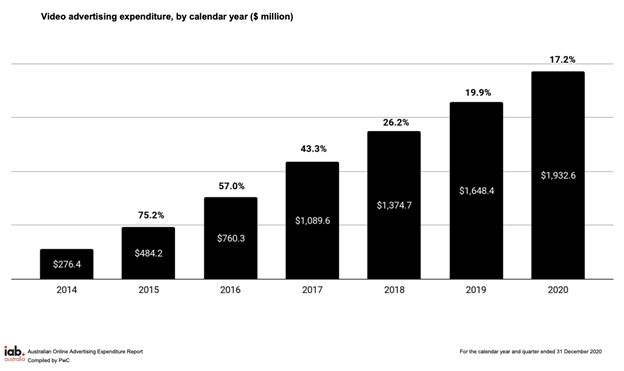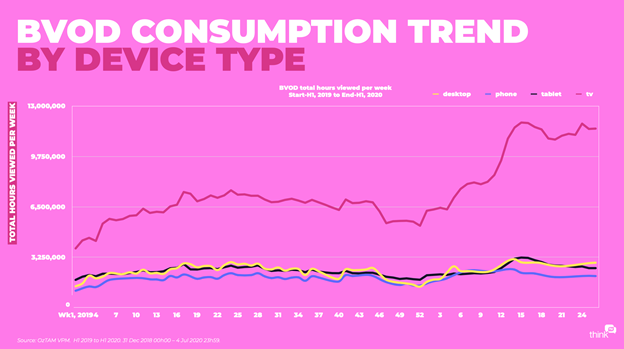As a consumer in 2021, video is unavoidable. Subscription Video On Demand (SVOD), Broadcast Video On Demand (BVOD) and Advertising-Based Video On Demand (AVOD) services are at your fingertips, while linear TV still attracts millions of eyeballs each day.
With this in mind, advertisers must think about how they can leverage video across multiple channels to reach this massive (and engaged) video audience.
But with so many different channels available for video advertising, as well as the option of long and short-form video, it can be a challenge for advertisers to come up with the right strategy. So what’s right for you when it comes to video?
We caught up with independent advertising platform Amobee to shed some light on how advertisers can make the most out of their video campaigns.
Know your objectives
Video is a highly effective medium to gain attention and get a message across to consumers. According to IAB Australia, video advertising investments increased by 17.2 per cent in 2020 compared to the previous year, which shows that marketers value this form of advertising.
But what about ad length and effectiveness?
There’s no doubt that both short-form and long-form ads each have their strengths. The real question marketers should be asking is, “What do I plan to achieve with my video ad?” While the message, medium and form are all important factors, ultimately, a campaign’s success depends on the goal it set out to achieve in the first place.
Looking at data from Amobee’s platform, it’s evident that long-form video is gaining popularity, growing from 40 per cent of video in 2019 to 60 per cent in 2020. However, more traditional verticals like FMCG are still opting for short-form video, while entertainment, telco and technology brands are typically favouring long-form on BVOD.
According to Amobee senior lead, platform Leo Madden [pictured below], consumers today are getting better at filtering content they are exposed to and marketers need to have clearly defined goals to cut through the noise.
“While time is a premium commodity, shorter is not always better. Short-form works best for simple messages, general reminders and driving brand awareness. Long-form, on the other hand, has proven to be more effective for brand building and making long-term connections with consumers,” comments Madden.
Focus on your audience
In the age of visual content, there are more ways to consume video content than ever before. It’s a common misconception that TV audiences are getting smaller given that younger audiences favour the convenience of video streaming online over appointment-based programming of linear TV. However, the device in which they consume content on-demand is still largely a TV – a connected TV.
While linear TV will remain strong and continue to take up the majority of media budgets, consumers’ increasing time spent on BVOD will drive marketers to allocate more ad spend to CTV through BVOD.
Based on data on Amobee’s platform, the percentage of BVOD in overall programmatic buys has gone up from 30 per cent in 2019 to 45 per cent in 2020. Across both short and long-form video, share of voice for BVOD has increased by 50 per cent. This has in part been aided by the growing adoption of CTV.
“We have seen a large shift in the available supply, adoption and now budgets for CTV and expect this trend to continue – particularly as digital TV is the topic of the moment,” Madden said.
“Historic supply and forecasting constraints for BVOD in an RTB environment slowed growth but now advertisers using the AmobeeTV platform can forecast and reserve supply as they would linear TV. This allows for securing larger trading positions across traditional and digital with confidence,” he adds.
Plan and measure across all devices
Few brands have a holistic view of their video campaigns and even fewer understand which campaigns are driving conversion. While advanced technologies have allowed marketers to easily activate both short-form and long-form video ads across TV, digital and social platforms, many trading teams are still doing them separately and in siloes.
“It’s been proven that consumers are screen agnostic. They follow the content, regardless of the device,” said Madden. “By implementing a total screens approach to activating video campaigns, advertisers can measure the effectiveness of each channel, minimise media wastage and extend reach.”
Real and reliable video planning is only possible when you can access supply and demand together. By consolidating all of video all in one place, advertisers will be able to understand and streamline the consumer journey across all channels.
To win in 2021 (and beyond), advertisers need to take a converged approach to engage audiences as they move across linear TV, connected TV and other smart devices.
Amobee is a global advertising technology company reinventing advertising for the converging world. We provide end-to-end campaign planning, management and optimisation across TV, digital and social media. Learn more about Amobee by visiting amobee.com











